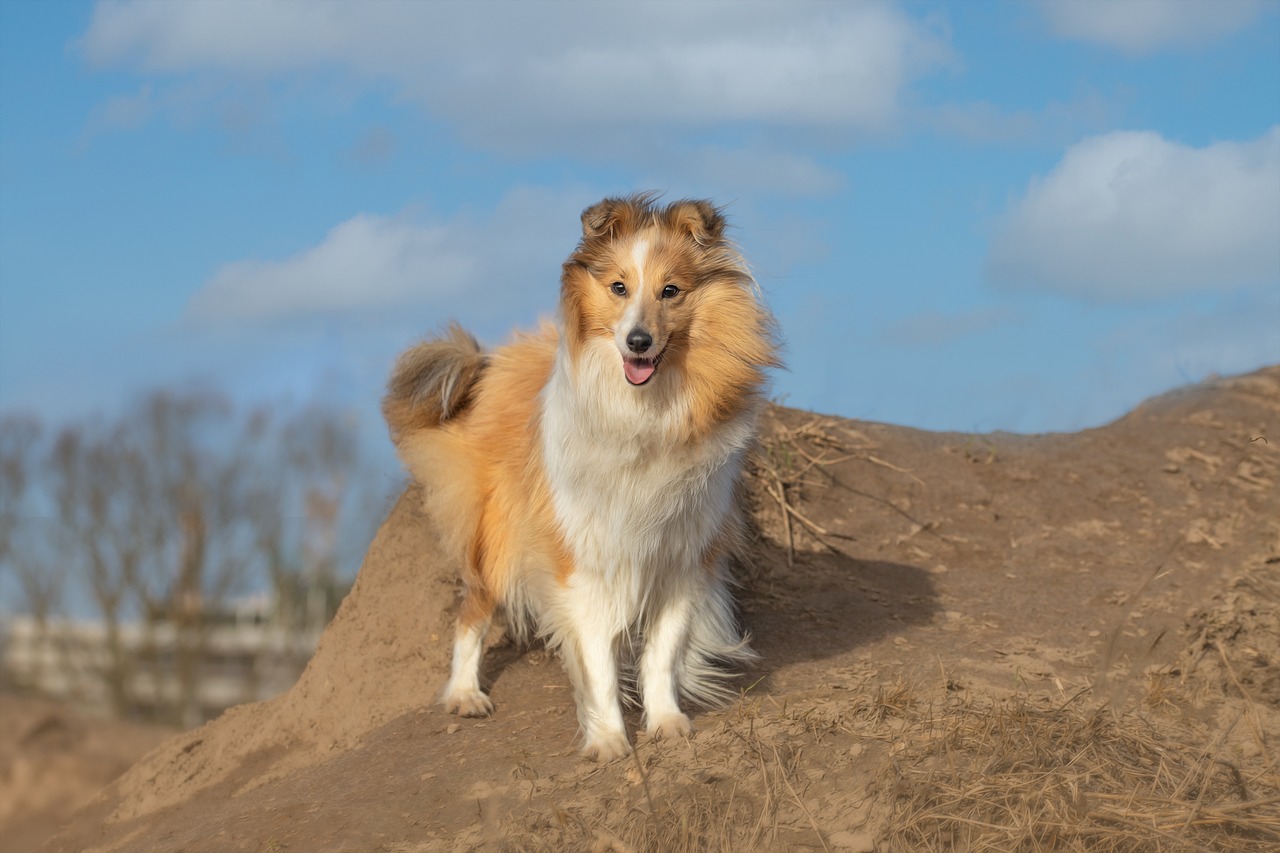Shetland Sheepdogs, commonly known as Shelties, are a breed renowned for their intelligence, agility, and stunning appearance, marked by a beautiful, flowing coat and a sharp, fox-like expression. Originally bred in the Shetland Islands of Scotland for herding sheep and ponies, Shelties are smaller than their close relatives, the Rough Collies, but share the same herding instincts and keenness. This breed is highly trainable and often excels in obedience and agility competitions, demonstrating their aptitude for learning and performing tasks. Alongside their remarkable abilities, Shelties displays several unusual habits that are both charming and perplexing. These behaviors are deeply rooted in their herding heritage, their environmental adaptations, and their keen senses, making them unique among herding breeds. This article explores seven of the most unusual habits of Shelties, providing insights into the reasons behind each behavior and offering guidance on how to manage these distinctive traits effectively.

1. Herding Everything That Moves
Shelties have a strong instinct to herd, a trait deeply ingrained from their days on the Shetland Islands. This behavior can manifest in herding children, other pets, or even adults by gently nipping at their heels or circling around them. While this can be endearing and sometimes amusing, it may also pose challenges in managing their interactions with small children and other animals. To manage this behavior, it’s important to provide structured outlets for their herding instincts, such as herding balls or agility training, which can satisfy their need to herd in a controlled and safe manner.
2. Shyness or Wariness of Strangers
Shelties can be naturally reserved or shy around strangers, a behavior that likely developed from their isolated environment in the Shetlands, where they were not widely exposed to many different people. While this caution can make them excellent watchdogs, it can also lead to timidity or anxiety if not properly managed. Early and consistent socialization is crucial to help Shelties become more comfortable around new people. Introducing them to a variety of social situations gradually and positively can enhance their confidence and sociability.
3. Vocal Communication
Shelties are often very vocal, using barks, whines, and even howls to communicate with their owners and express their emotions. This habit can be traced back to their herding role, where vocalization was used to control sheep and alert shepherds. While their communication can be helpful in understanding their needs, excessive barking may require training to control. Teaching commands like “quiet” or “enough,” along with ensuring they have enough physical and mental stimulation, can reduce unnecessary barking.
4. Chasing Light and Shadows
Shelties may exhibit a fascination with chasing light reflections or shadows, behaviors that stem from their high prey drive and sensitivity to movement. While this can seem harmless, it can lead to obsessive behaviors if not managed. Providing plenty of regular exercise and mental challenges can help redirect their focus. Additionally, avoiding games that encourage chasing lights or shadows and instead using toys that promote healthy chasing can prevent the development of obsessive behaviors.
5. Spinning in Circles
Before lying down or when excited, Shelties might spin in circles. This habit can be a remnant of their ancestral nesting behaviors or simply a way to release excess energy. While typically harmless, if spinning becomes frequent or compulsive, it may be indicative of anxiety or excess energy. Ensuring they have a comfortable resting area and sufficient daily activity can help mitigate this behavior.
6. Extreme Loyalty and Attachment
Shelties often form an extremely close bond with their family, showing intense loyalty and attachment. This can sometimes result in separation anxiety or distress when left alone. To help manage this, training for independence is essential, along with providing engaging activities that keep them occupied when alone. Crate training and leaving them with toys that stimulate their minds can also alleviate anxiety.
7. Picky Eating Habits
Some Shelties can be surprisingly picky eaters, which might stem from a sensitive digestive system or simply a preference for certain tastes and textures. Establishing a consistent feeding routine, providing a balanced diet, and not giving in to the temptation to offer table scraps can encourage healthier eating habits. Consulting a veterinarian can also ensure that pickiness isn’t due to underlying health issues.
Shelties are a fascinating and engaging breed, whose unusual habits are a window into their rich herding heritage and sensitive nature. By understanding and thoughtfully managing these habits, owners can ensure their Shelties lead happy, healthy, and fulfilling lives. Proper training, socialization, and care are essential in nurturing their physical and emotional well-being, allowing these intelligent and affectionate dogs to thrive as both companions and skilled performers in various canine activities.
 Toledo, United States.
Toledo, United States.